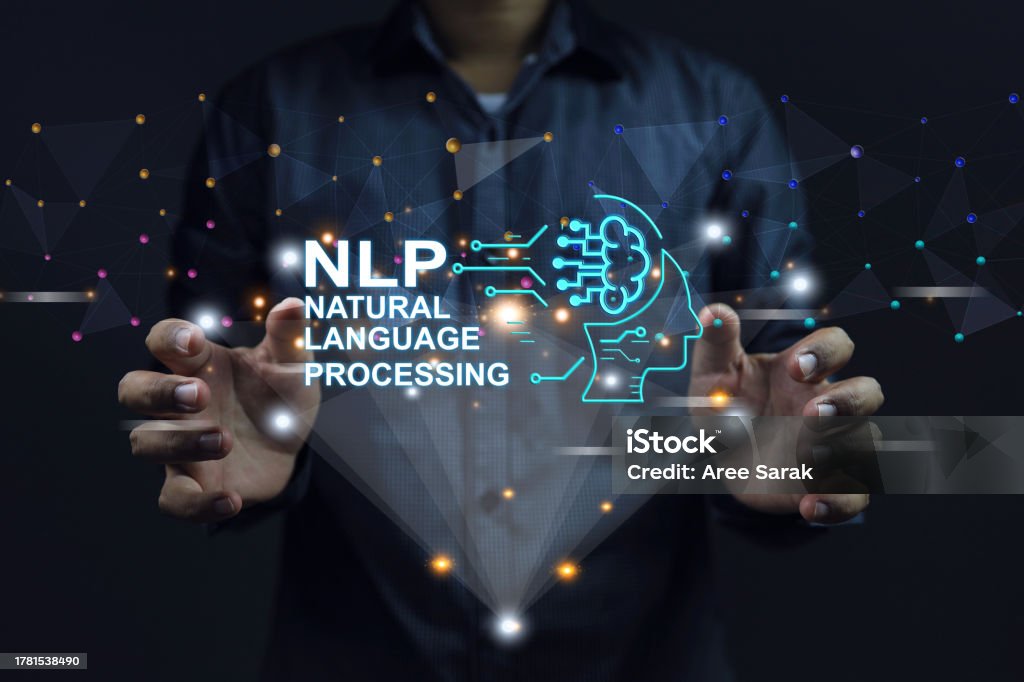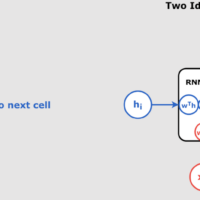What is NLP and the Math Behind It? Understanding Transformers and Deep Learning in NLP Introduction to NLP Natural Language Processing (NLP) is a crucial subfield of artificial intelligence (AI) that focuses on enabling machines to process and understand human language. Whether it’s machine translation, chatbots, or text analysis, NLP helps bridge the gap between human communication and machine understanding. But what’s behind NLP’s ability to understand and generate language? Underneath it all lies sophisticated mathematics and cutting-edge models like deep learning and transformers. This post will delve into the fundamentals of NLP, the mathematical principles that power it, and its connection to deep learning, focusing on the revolutionary impact of transformers. What is NLP? NLP is primarily about developing systems that allow machines to communicate with humans in their natural language. It encompasses two key areas: Natural Language Understanding (NLU): The goal here is to make machines comprehend and interpret human language. NLU allows systems to recognize the intent behind the text or speech, extracting key information such as emotions, entities, and actions. For instance, when you ask a voice assistant “What’s the weather like?”, NLU helps the system determine that the user is asking for weather information. Natural Language Generation (NLG): Once a machine understands human input, NLG takes over by generating appropriate responses. An example of this is AI writing assistants that can craft sentences or paragraphs based on the data provided. The Math Behind NLP: Deeper Understanding with Examples Let’s dive deeper into the math behind NLP using examples with tables and figures to clarify each concept. I will break down each of the five components (Phonology, Morphology, Syntax, Semantics, and Pragmatics) with practical examples and detailed explanations. Phonology: Understanding Sounds Phonology deals with the structure of sounds in language. In NLP, phonological processing involves identifying and predicting sequences of sounds, which is often applied in speech recognition systems. Mathematical Model: Hidden Markov Model (HMM) Example: Let’s assume we want to build a model that recognizes whether a person is saying the word “cat” or “bat” based on the sounds they produce. States: Phonemes (smallest sound units), e.g., /k/, /æ/, /t/, /b/. Transitions: Probabilities of moving from one sound to the next. Observations: The sound wave frequencies detected. Here’s an example of a simplified HMM table representing the transitions between phonemes: From/To /k/ /æ/ /t/ /b/ /k/ 0 0.9 0.1 0 /b/ 0 0.8 0 0.2 /æ/ 0 0 1.0 0 /t/ 0 0 0 0 In this case:- The system will likely start with (90% chance it’s part of “cat”).- The next most probable state would be (90% chance of transitioning from to ).- Finally, we move to to complete the word “cat.” — Morphology: Analyzing Word Structure Morphology studies how words are formed from smaller units called morphemes. In NLP, tokenization and stemming/lemmatization are critical for simplifying words to their root forms. Example: Let’s look at the word “unhappiness.” Prefix: “un-” (negation). Root: “happy” (meaning: joy). Suffix: “-ness” (makes the word a noun). Mathematical Process:In stemming, we reduce the word to its root by removing prefixes and suffixes. Here’s how a simple rule-based stemming table would look: Word Stemming Rule Stemmed Word unhappiness Remove “un-” and “-ness” happy running Remove “-ing” run consulted Remove “-ed” consult Explanation: The stemmer applies predefined rules to strip off prefixes and suffixes. However, stemming can sometimes lead to incorrect results (like stemming “consultant” to “consult”), which is why lemmatization is often preferred. Lemmatization uses a vocabulary and morphological analysis of words to return the correct form. For example, “better” would be lemmatized to “good.” — Syntax: Understanding Sentence Structure Syntax focuses on how words are arranged in sentences. In NLP, syntax analysis helps determine the grammatical relationships between words. Mathematical Model: Dependency Parsing Example: Let’s analyze the sentence: “The cat chased the mouse.” Subject: “The cat” Verb: “chased” Object: “the mouse” Dependency parsing involves creating a tree where words are nodes, and grammatical relationships are edges. Here’s a simplified dependency tree for this sentence: chased / \ The cat the mouse Parsing Table: Word Part of Speech Head Word Dependency Relation The Determiner cat Determiner cat Noun chased Subject chased Verb ROOT Root Verb the Determiner mouse Determiner mouse Noun chased Object Explanation: The dependency tree shows that “chased” is the root verb, with “cat” as its subject and “mouse” as its object. This structure helps the system understand the grammatical relationship between the words. — Semantics: Understanding Meaning Semantics involves interpreting the meaning of words and sentences. A key approach to understanding meaning in NLP is through word embeddings like Word2Vec. Mathematical Model: Word Embeddings (Vector Representation) Example: Let’s look at how the words king and queen are represented in a vector space. Word2Vec converts words into high-dimensional vectors where similar words are closer to each other in the space. For example: Word Vector Representation king [0.5, 0.6, 0.7, …] queen [0.5, 0.6, 0.8, …] man [0.4, 0.7, 0.1, …] woman [0.4, 0.7, 0.2, …] In this example:- The vectors for and are similar, but they differ slightly in certain dimensions that capture gender information.- The famous analogy is one of the fascinating aspects of word embeddings, showing how relationships between words can be mathematically encoded. Here’s a 2D visualization of this relationship: king —- man | | | | queen —- woman Explanation: The distance between “king” and “queen” is similar to the distance between “man” and “woman” in this space, capturing both semantic meaning and gender relationships. — Pragmatics: Understanding Context Pragmatics involves understanding language in context. Unlike semantics, which focuses on the literal meaning of words, pragmatics requires knowledge about the world and context to interpret meaning. Mathematical Model: Contextual Embeddings (BERT) Example: Consider the sentence “Can you pass the bank?” Without context, the word “bank” can mean: A financial institution. The side of a river. BERT (Bidirectional Encoder Representations from Transformers) processes the entire sentence and captures both directions of context to correctly interpret the meaning of “bank.” For example, in the sentence “Can you pass the river bank?”, BERT would likely associate “bank” with the river context. Table of Contextual Word Embeddings: Sentence Word Embedding “I deposited money in the bank” bank [0.8, 0.6, 0.1, …] “I walked along the river bank” bank [0.3, 0.4, 0.7, …] In this example:- Even though the word “bank” is the same, its vector representation changes depending on the sentence context, allowing the system to disambiguate its meaning. Explanation: BERT uses attention mechanisms to weigh the context of all surrounding words, helping the system determine the correct meaning based on the overall sentence. — Figures and Diagrams for Deeper Understanding Let’s now introduce some diagrams to visually reinforce these concepts: Phonology – HMM Transition Diagram: A state transition diagram illustrating how different phonemes transition between one another in a Hidden Markov Model. Morphology – Tokenization Example: A breakdown of how words like “consulted” and “consulting” are tokenized and stemmed. Syntax – Dependency Tree: A visual tree showing the dependency relationships between words in a sentence (like the “The cat chased the mouse” example). Semantics – Word Embedding Space: A 2D plot showing how related words like “king,” “queen,” “man,” and “woman” are positioned relative to each other. Pragmatics – BERT Contextual Embedding: A diagram explaining how BERT adjusts the word embedding for “bank” based on different sentence contexts. Now Lets Make a Summary of the Paper *“Natural Language Processing: State of the Art, Current Trends, & Challenges”* for a Scientific Overview Of NLP In this part, we will provide an in-depth explanation of the paper “Natural Language Processing: State of the Art, Current Trends, and Challenges” by Khurana et al. (2022). This paper provides a comprehensive overview of NLP, its evolution, key components, the role of deep learning and transformers, and the challenges that remain in the field. — 1. History and Evolution of NLP The paper begins with a historical overview of NLP, highlighting the major milestones that have shaped the field over the decades. Early Days of NLP (1940s – 1960s): NLP first emerged with the development of machine translation in the 1940s. Initial models relied on rule-based systems that attempted to translate text between languages using predefined rules and dictionaries. However, this approach was very limited in its ability to handle the nuances of human language. The ALPAC Report (1966): The ALPAC (Automatic Language Processing Advisory Committee) report in 1966 dealt a significant blow to early NLP efforts. The report concluded that machine translation systems of that era were far from practical and discouraged further research in this area for some time. Statistical Methods (1980s – 1990s): By the 1980s and 1990s, statistical methods began to replace rule-based approaches. Statistical NLP relied on large datasets and probabilistic models to analyze language, laying the groundwork for modern NLP. Models like Hidden Markov Models (HMMs) and Naïve Bayes classifiers were commonly used for tasks like speech recognition and spam detection. Neural Networks and Deep Learning (2000s onwards): Early 2000s marked a significant turning point…
Mastering NLP: Unlocking the Math Behind It for Breakthrough Insights with a scientific paper study – day 71




